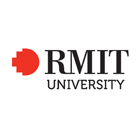Master of Engineering (Environmental Engineering)
- Home
- Courses
- RMIT University (Royal Melbourne Institute of Technology University)
- Master of Engineering (Environmental Engineering)
Master of Engineering (Environmental Engineering)
Develop specialist knowledge in the environmental engineering fields of design, infrastructure planning, water engineering, sustainability, project management and transport engineering. The Master of Engineering (Environmental Engineering) will develop advanced knowledge and skills in environmental engineering to enhance your career prospects in relevant industries. You will develop specialist technical capabilities in:…
Categories
COURSE DESCRIPTION
Develop specialist knowledge in the environmental engineering fields of design, infrastructure planning, water engineering, sustainability, project management and transport engineering.
The Master of Engineering (Environmental Engineering) will develop advanced knowledge and skills in environmental engineering to enhance your career prospects in relevant industries.
You will develop specialist technical capabilities in:
water treatment engineering and water resource systems optimisation
advanced technologies for wastewater reclamation
urban hydrology
soil remediation
humanitarian engineering
sustainable waste management in the context of circular economy.
You’ll develop extensive knowledge in environmental engineering and related technologies combined with advanced oral and written communication, teamwork, process design, project management and research skills. You will enhance your professional skills in management, leadership and business enterprise.
You’ll also gain skills that will allow you to step up as a project leader, consultant or manager with the knowledge to lead the introduction of new technologies and operating practices in environmental engineering.
Career
Previous RMIT graduates have gone onto work at companies such as:
Water companies such as Melbourne Water, City West Water
Consultancies
Industry including manufacturing and construction
Environmental engineers work on projects including environmental impact studies, energy conservation, sustainability, pollution control and humanitarian engineering.
There is a growing need to understand better and more effectively integrate the environmental factors that are part of modern living. Environmental engineers will play an important role in achieving this balance.
Graduates of the Master of Engineering (Environmental Engineering) will be sought in Australia and overseas, mainly Southeast Asia and East Asia. There is steady employment of environmental engineers in Australia in the water and hydrology sectors, land remediation, construction, infrastructure and mining industries.
EDUCATIONAL INSTITUTION
Since its establishment in 1887, Royal Melbourne Institute of Technology University (RMIT) has been meeting the needs of the community surrounding it. Originally a Working Men’s College, RMIT showed its flexibility during World War Two, training over 20,000 servicemen in communications to help with the war effort.Now, it is a true pioneer in international education, championing cross-border study opportunities with campuses in various countries. Granted formal university status in 1992, RMIT is ranked 21st in the world for universities that are less than 50 years old.RMIT is the largest higher education institution in Australia, currently with more than 82,000 students. With nearly 20% of those students coming from overseas, it is a university that truly welcomes diversity and is a melting pot of different cultures. RMIT has three campuses in Vietnam, a European hub in Barcelona, an office in Indonesia, and partners with 200+ institutions in 42 countries to provide study opportunities worldwide.
Since its establishment in 1887, Royal Melbourne Institute of Technology University (RMIT) has been meeting the needs of the community surrounding it. Originally a Working Men’s College, RMIT showed its flexibility during World War Two, training over 20,000 servicemen in communications to help with the war effort.
Now, it is a true pioneer in international education, championing cross-border study opportunities with campuses in various countries. Granted formal university status in 1992, RMIT is ranked 21st in the world for universities that are less than 50 years old.
RMIT is the largest higher education institution in Australia, currently with more than 82,000 students. With nearly 20% of those students coming from overseas, it is a university that truly welcomes diversity and is a melting pot of different cultures. RMIT has three campuses in Vietnam, a European hub in Barcelona, an office in Indonesia, and partners with 200+ institutions in 42 countries to provide study opportunities worldwide.




